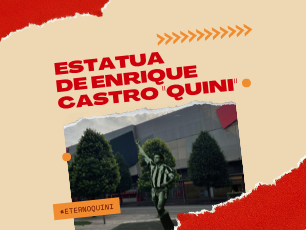1.“Eulogy of the Horizon” and Santa Catalina Headland
At the highest point of the headland, the ancient vantage point from where whales were sighted,
stands one of the favourite works of artist Eduardo Chillida, Prince of Asturias Award for the Arts.
The Basque sculptor confessed that he had travelled the European Atlantic coast in search of
possible locations. On receiving the invitation from Gijón and following his visit to Santa Catalina
Headland, he knew that it was the perfect location. Raised in 1990, in the town’s former fishing
quarter, the sculpture was met with suspicion by the ironic spirit of its inhabitants. Today, it is one
of the symbols of the city and a must visit. The sculpture gives rise to different impressions
depending on the viewpoint. What’s more, it also surprises due to its seashell effect –altogether
unexpected by the author– which captures the sound of the sea as you step inside it. The walk up the
hill affords a panoramic view that helps you to understand the city, its double bay and backdrop of
hills enclosing it to the south.
2. Roman Baths
Gijón’s public baths are considered one of the most important Roman sites in northern Spain. Built
between the 1st and 2nd centuries AD, they were unearthed in 1903, but were not opened to the
public until 1965. The present-day museum was built in the 1980s following the excavations and
restoration of Roman Gijón. Each area boasts a computer graphic reconstruction of the thermae.
Coloured lights are used to evoke the cold rooms, warm baths, hot rooms and furnaces, and the
Roman heating system is also explained. The visit allows you to discover the development of the
oldest town in Asturias, founded more than 2,000 years ago. The baths are undoubtedly a good
starting point to visit other fascinating archaeological museums in Gijón, such as Campa Torres
Archaeological and Nature Park and the Roman Villa of Veranes.
3. Gijon’s “Universidad Laboral”
The largest building constructed in Spain in the 20th century is a great unknown. It is surprising for
the magnitude of the complex of buildings, occupying more than 130,000 square metres, raised in
the post-war period. In appearance, it follows the ideals of classical architecture, although the visit
reveals its more innovative aspects. Closed in on itself, it is laid out around a large central square or
courtyard, measuring 150 by 50 metres, reminiscent of the style of Castilian plazas, although its
main source of inspiration is the Piazza San Marco in Venice. Set around the courtyard are the
chapel, covered by the largest elliptical dome in Europe, the theatre, with its Hellenistic façade, and
the tower, the tallest building in Asturias and the highest stone construction in Spain. It was
originally conceived as a miners’ orphanage. However, when building work commenced in 1948
under the supervision of architect Luis Moya Blanco, it was decided that it was to become the
country’s first Universidad Laboral (vocational training university). Today, under the name of
Laboral City of Culture, it plays a key role in Gijón’s “Mile of Knowledge”.
4. Atlantic Botanic Gardens
Those who expect traditional botanic gardens are in for a surprise! At Gijón’s Botanic Gardens, you
can lose yourself in a centennial oak wood –a listed natural monument–, walk in silence through an
alder grove or take a stroll through historical gardens dating from the 19th century. There is also an
educational area showing the native vegetation on both sides of the Atlantic. Without the need to
leave the city, the gardens allow you to discover the enchantment of natural areas characteristic of
Asturias. In summer, concerts with unique formats are held in the magical setting of the Botanic
Gardens.
5. Cimavilla
Right in the heart of Asturias’ most cosmopolitan city, the old town transports you to an authentic
fishing quarter. Ever since the Romans left the first settlement on Cape Torres to found Gigia, in the
1st century AD, the city was restricted to this peninsula that divides San Lorenzo Bay. The move
further inland did not take place until the 18th century, resulting in the city’s present-day layout.
Roman remains coexist in Cimavilla alongside the memories of its maritime past, of whalers and
the women who rolled the cigars in the tobacco factory. It is also home to the birthplace and tomb of
Jovellanos, traces of the Way of St James and the city’s nightlife, a hallmark of the neighbourhood.
At its feet is to be found the marina, the former domain of sailors and trade with the Americas.
Overlooking the marina stands one of the finest baroque palaces in the region, as well as the city’s
shopping area.
6. Cider Culture
Cider, which the Romans discovered when they arrived here two thousand years ago, is more than
just a drink: it is a way of relating to others, of conversing and of making merry. It is never drunk
alone or in silence; it is always shared with friends, family or workmates. Or, if you are actually on
your own, with the cider tavern’s patrons. You don’t order a glass, you start off with una botellina
(a “wee” bottle)... and something to eat to accompany it! It is surrounded by its very own rites,
vocabulary and explanation, including how to pour it… from a height! There are numerous options
to experience cider culture in Gijón. Enter any cider tavern in town or head to the bars overlooking
the marina when the weather is fine. You can visit the cider mills located in the surrounding
countryside or make for to the merenderos (picnic restaurants) just outside town. If you are lucky,
you can also enjoy an informal buffet-style banquet held in a cider mill, known as an espicha,
usually organized to celebrate a family or work event, such as the end of a congress. Technically
speaking, the word espicha refers to the action of opening a barrel for the first time by knocking an
espita (spigot) into it. In popular culture, it is a traditional feast held in a cider mill. Cider is served
directly from the barrel at such events, the food is home cooked and eaten up standing up so that the
participants can mix freely.
7. The Cantabrian Sea (Bay of Biscay)
In the 1990s, Gijon rediscovered (and regained) its coastline. To enjoy the spectacle of the
Cantabrian Sea –as this part of the Bay of Biscay is known– is simple –practically inevitable– in a
city that has three beaches and one of its marinas right in the town centre. In order to understand the
fascination of the residents of Gijón for San Lorenzo Beach, you need to pay a visit at night to the
promenade they refer to as “El Muro” (The Wall), which includes a three-kilometre vista of that part
of the bay. The promenade’s name alludes to the “retaining wall for water” built in the 18th century
to protect the city. In the harbour area in winter, you can enjoy the spectacle of crashing waves,
which often break over the harbour wall. To discover the sheer Asturian coastline without leaving
the city, you can follow the promenade between the River Piles Bridge and El Rinconín and then
take the Cervigón Pathway, which overlooks the open sea on its way to Peñarrubia Beach and La
Providencia hilltop.
If you have more time to spare, be sure to:
- Look out for the sculptures that dot Gijón, the result of the commitment to transform the urban landscape using contemporary works of art. You will find them on the course of your walks around the town.
- Ask about the route devoted to the Enlightenment scholar and statesman Gaspar Melchor de Jovellanos and discover the reason behind the following saying: “Gijón owes the sea to God and the rest to Jovellanos.
- Look upwards and discover the unexpected Modernist buildings that make up an unexpected urban route.
Discover which of the theme museums is the one you are most interested in: there are museums dedicated to ethnography, industrial heritage and fine arts.














